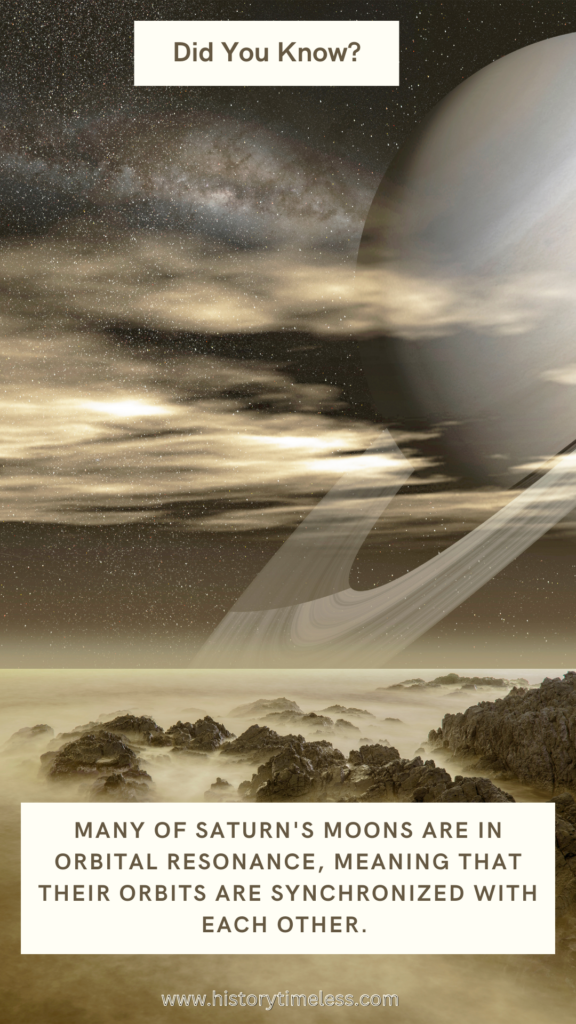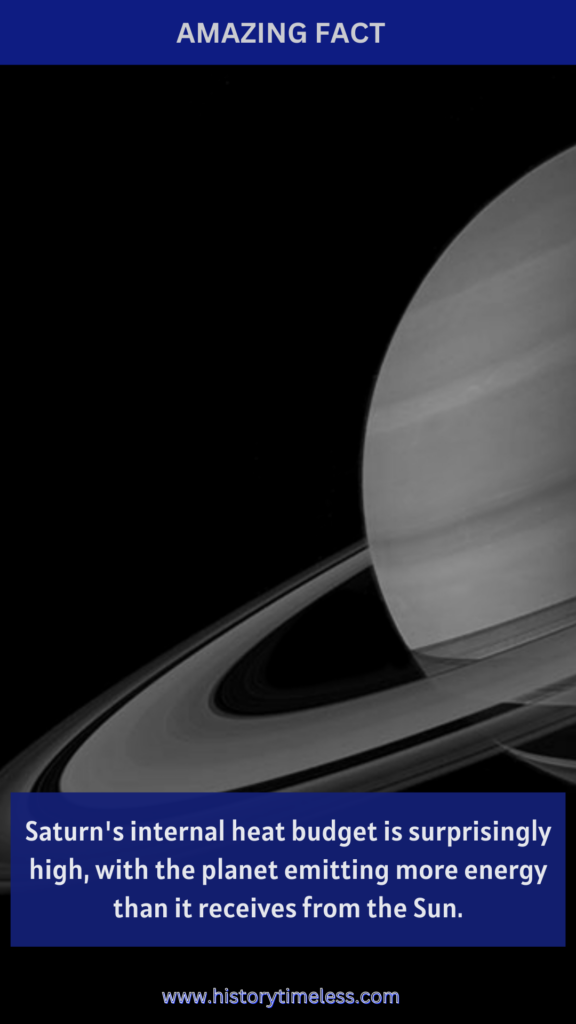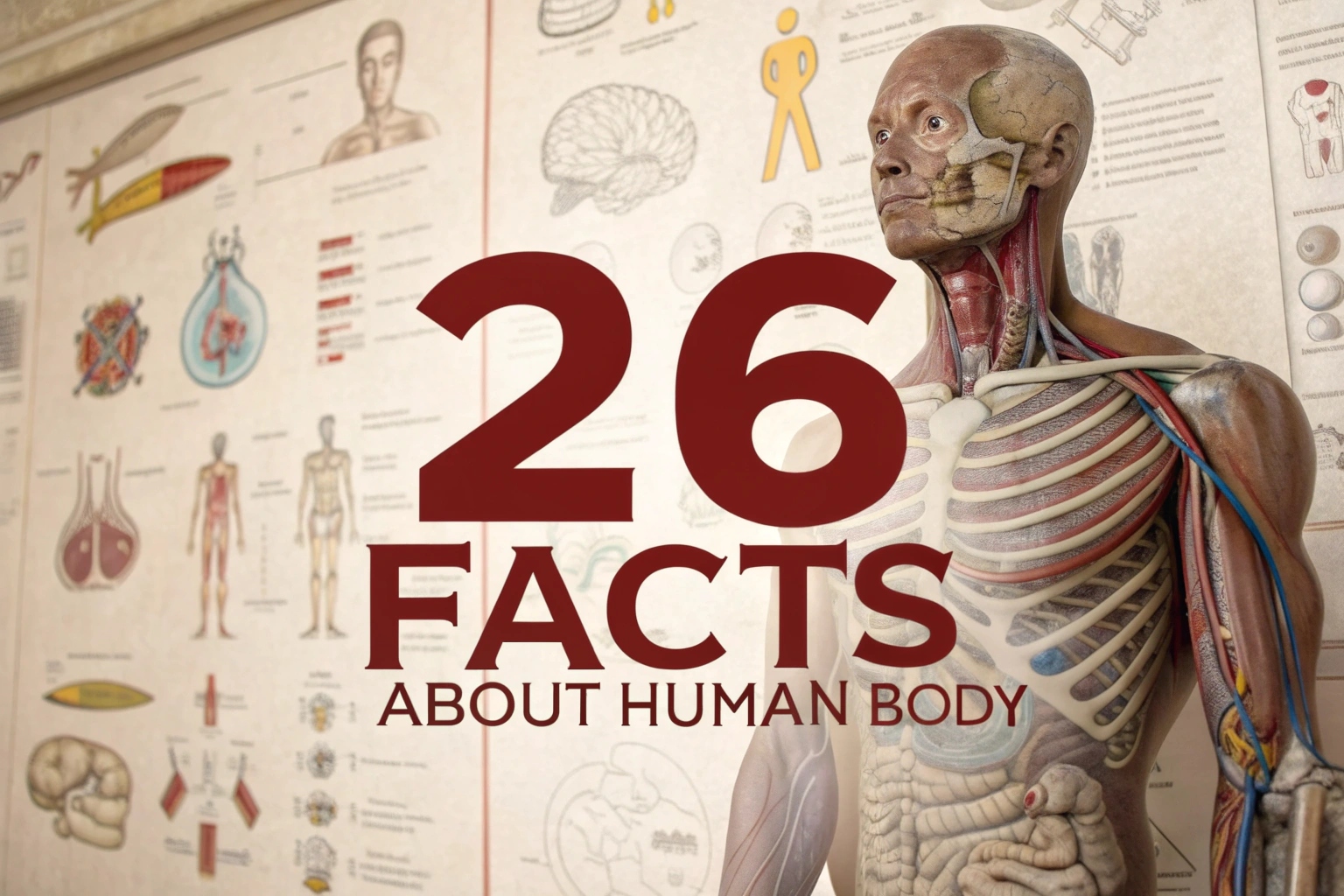Saturn, the sixth planet from the Sun, is a stunning celestial body with numerous unique features. From its breathtaking ring system to its fascinating moons, Saturn is a world of wonder. With its distinctive North Pole hexagon and incredible wind speeds, Saturn is a planet like no other. Here are 26 cool Saturn facts that will take you on a journey through the wonders of our solar system and leave you in awe of this magnificent planet.
1. Saturn’s Internal Structure
Saturn’s internal structure is thought to consist of a dense core surrounded by a thick layer of metallic hydrogen. This core is believed to be approximately 10 times the size of Earth’s core and is thought to be responsible for the planet’s strong magnetic field.
2. Saturn’s Moon Hyperion’s Chaotic Rotation
Hyperion, one of Saturn’s smaller moons, features a chaotic rotation pattern, with its axis of rotation wobbling wildly over time. This is thought to be caused by the gravitational pull of nearby moons and Saturn itself, creating an unpredictable and fascinating orbital pattern.
3. Saturn’s Ring System Composition
Saturn’s ring system is composed of countless icy particles, ranging in size from tiny dust grains to massive boulders. These particles orbit Saturn, creating a breathtaking spectacle of light and shadow.
The rings are incredibly thin, measuring only about 30 feet thick in some areas, yet they stretch out for hundreds of thousands of miles.
4. Saturn’s Moons’ Orbital Resonance
Many of Saturn’s moons are in orbital resonance, meaning that their orbits are synchronized with each other.

This can create complex and fascinating orbital patterns, with moons interacting and influencing each other’s orbits over time.
5. Saturn’s Magnetic Field Reversals
Saturn’s magnetic field has reversed polarity over time, with the planet’s magnetic north pole switching places with the magnetic south pole. This is similar to the Earth’s magnetic field reversals, which have occurred numerous times throughout our planet’s history.
6. Saturn’s Moon Dione’s Subsurface Ocean
Dione, one of Saturn’s larger moons, is thought to feature a subsurface ocean, similar to those found on Enceladus and Titan. This ocean is believed to be in contact with the moon’s rocky core, making it a potential candidate for supporting life.
7. Saturn’s Polar Vortices
Saturn’s polar regions feature massive vortices, which are rotating storm systems that can be thousands of miles across. These vortices are thought to be similar to those found on other planets, such as Jupiter and Uranus.
8. Saturn’s Great White Spot
Saturn’s atmosphere occasionally features massive storm systems known as Great White Spots, which can be thousands of miles across. These storms are thought to be similar to Jupiter’s Great Red Spot and can be incredibly long-lived, lasting for months or even years.
9. Saturn’s Cloud Formation Process
Saturn’s clouds form through a complex process involving the condensation of atmospheric gases and the upwelling of warmer air from the planet’s interior. This process creates the distinctive cloud bands and layers that we see in Saturn’s atmosphere.
10. Saturn’s Moon Tethys’s Surface Features
Tethys, another of Saturn’s moons, features a surface with numerous craters, canyons, and impact basins. The moon’s surface is also home to a massive rift system, which is thought to have formed as a result of tectonic activity early in the moon’s history.
11. Saturn’s Aurora Displays
Saturn’s magnetic field and upper atmosphere create spectacular aurora displays, similar to the northern lights on Earth. These displays are powered by charged particles from the solar wind and can be thousands of times more powerful than those on our planet.
12. Saturn’s Moon Rhea’s Surface Composition
Rhea, one of Saturn’s larger moons, features a surface composed primarily of water ice, with smaller amounts of darker organic material. The moon’s surface is also home to numerous craters and fault lines, indicating a geologically complex history.
13. Saturn’s Internal Heat Budget
Saturn’s internal heat budget is surprisingly high, with the planet emitting more energy than it receives from the Sun.

This is thought to be caused by the decay of radioactive elements in the planet’s core, as well as the energy released by the planet’s rapid rotation and convection.
14. Saturn’s Wind Speeds
Saturn’s winds are among the fastest in the solar system, with gusts reaching speeds of up to 1,118 kilometers per hour. This makes them much faster than any hurricane or tornado on Earth, and they’re powered by Saturn’s internal heat and rotation.
15. Saturn’s Ring Shepherding
Saturn’s moons play a crucial role in shepherding the planet’s ring particles, keeping them in their orbits and preventing them from spreading out or colliding with each other. This process is essential for maintaining the stability and structure of the ring system.
16. Saturn’s Moon Mimas’s Death Star Appearance
Mimas, another of Saturn’s moons, features a massive crater called Herschel that gives it a distinctive “death star” appearance. The crater is approximately one-third the size of Mimas itself and is thought to have been caused by a massive asteroid impact early in the moon’s history.
17. Saturn’s Aurorae Variability
Saturn’s aurorae are highly variable, with the planet’s magnetic field and upper atmosphere creating a complex and dynamic display of light and color. The aurorae can be affected by the solar wind, the planet’s rotation, and the orbit of its moons.
18. Saturn’s Atmosphere Escape
Saturn’s atmosphere is slowly escaping into space, with the planet losing approximately 1-2% of its atmospheric gases every billion years. This is thought to be caused by the solar wind and the planet’s magnetic field, which can strip away atmospheric gases over time.
19. Saturn’s Cloud Layers
Saturn’s atmosphere features multiple cloud layers, including ammonia clouds, water clouds, and hydrogen sulfide clouds. These clouds are thought to be layered, with different compounds condensing at different altitudes and temperatures.
20. Saturn’s Rotation Period
Saturn takes approximately 10.7 hours to complete one rotation on its axis, making it one of the fastest-spinning planets in the solar system. This rapid rotation causes the planet’s equator to bulge outward, creating a distinctive oblate shape.
21. Saturn’s Moon Enceladus’s Geysers
Enceladus, one of Saturn’s smaller moons, features geysers of water vapor and organic compounds that erupt from its southern pole.
These geysers are thought to be powered by tidal heating, caused by Saturn’s gravitational pull, and may indicate the presence of a liquid water ocean beneath the moon’s surface.
22. Saturn’s North Pole Hexagon
Saturn’s North Pole features a bizarre and fascinating hexagonal cloud pattern, with each side measuring approximately 8,600 miles long. This unique shape is thought to be caused by strong winds and storm patterns in the upper atmosphere, creating a stable wave pattern that maintains the hexagon’s shape.
23. Saturn’s Ring System Age
Saturn’s ring system is thought to be relatively young, with some scientists estimating that it formed only a few hundred million years ago. This is surprisingly recent, considering the age of the solar system, and suggests that the rings may be a temporary feature that will eventually dissipate.
24. Saturn’s Moon Titan’s Size
Titan, Saturn’s largest moon, is the second-largest moon in our solar system, with a diameter of approximately 3,200 miles. This makes it larger than the planet Mercury, and it’s the only moon in our solar system with a substantial atmosphere, complete with lakes, seas, and even rain.
25. Saturn’s Magnetic Field Strength
Saturn’s magnetic field is incredibly strong, powered by the planet’s rapid rotation and convection in its liquid metal core. The magnetic field is so powerful that it traps and accelerates charged particles from the solar wind, creating spectacular light displays in the planet’s upper atmosphere.
26. Saturn’s Rings’ Dynamical Evolution
Saturn’s rings are constantly evolving, with the planet’s moons and magnetic fields shaping and reshaping the ring particles over time. This process creates a dynamic and ever-changing system, with new ring particles forming and old ones being destroyed or ejected into space.
Savor More Mind-Blowing Facts:
25 Fascinating Facts About the Moon You’ll Love
25+ Quick Facts to Make You the Smartest Person at Parties
22 Stunning Facts About Neptune You Need to Know





